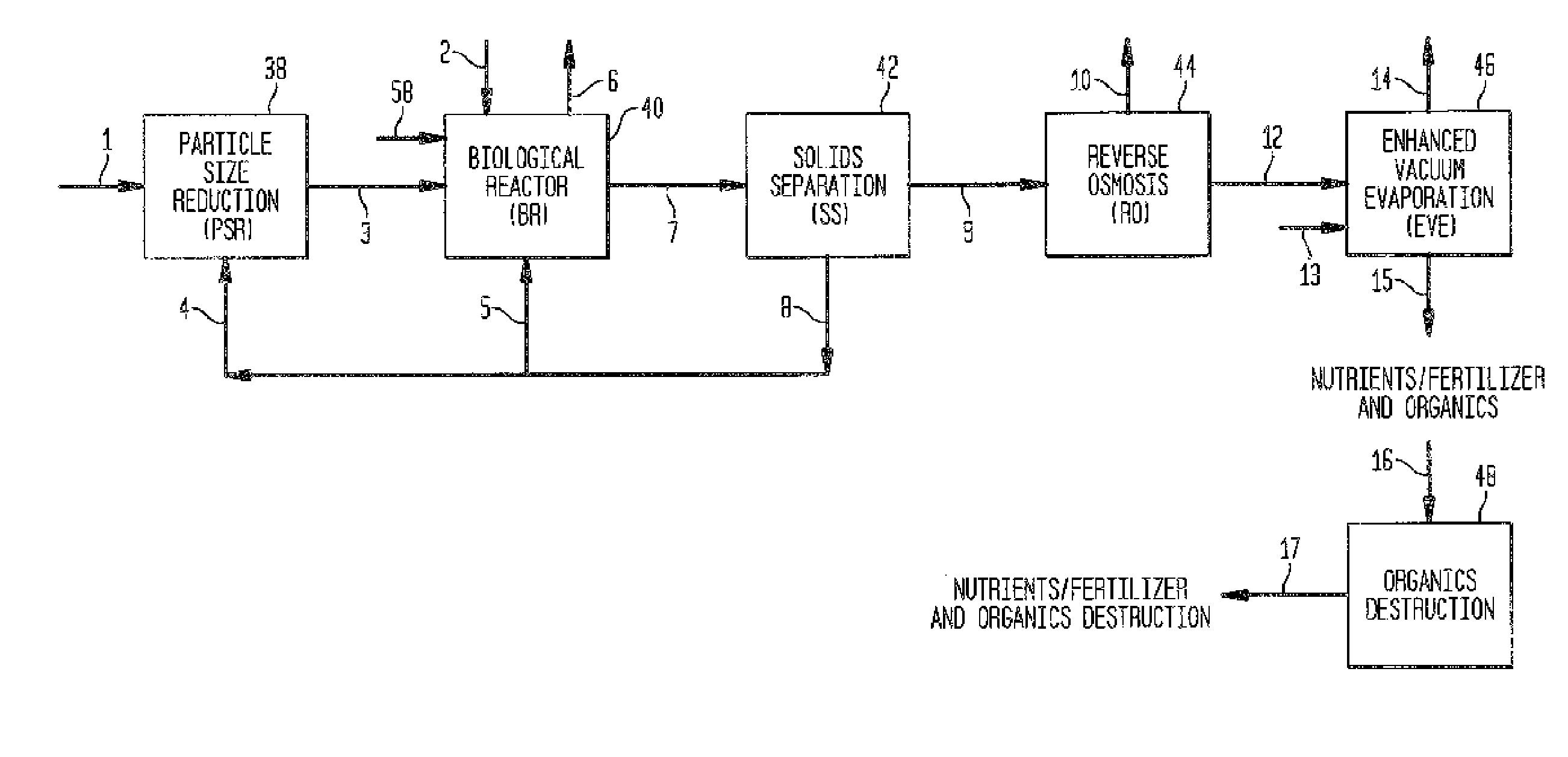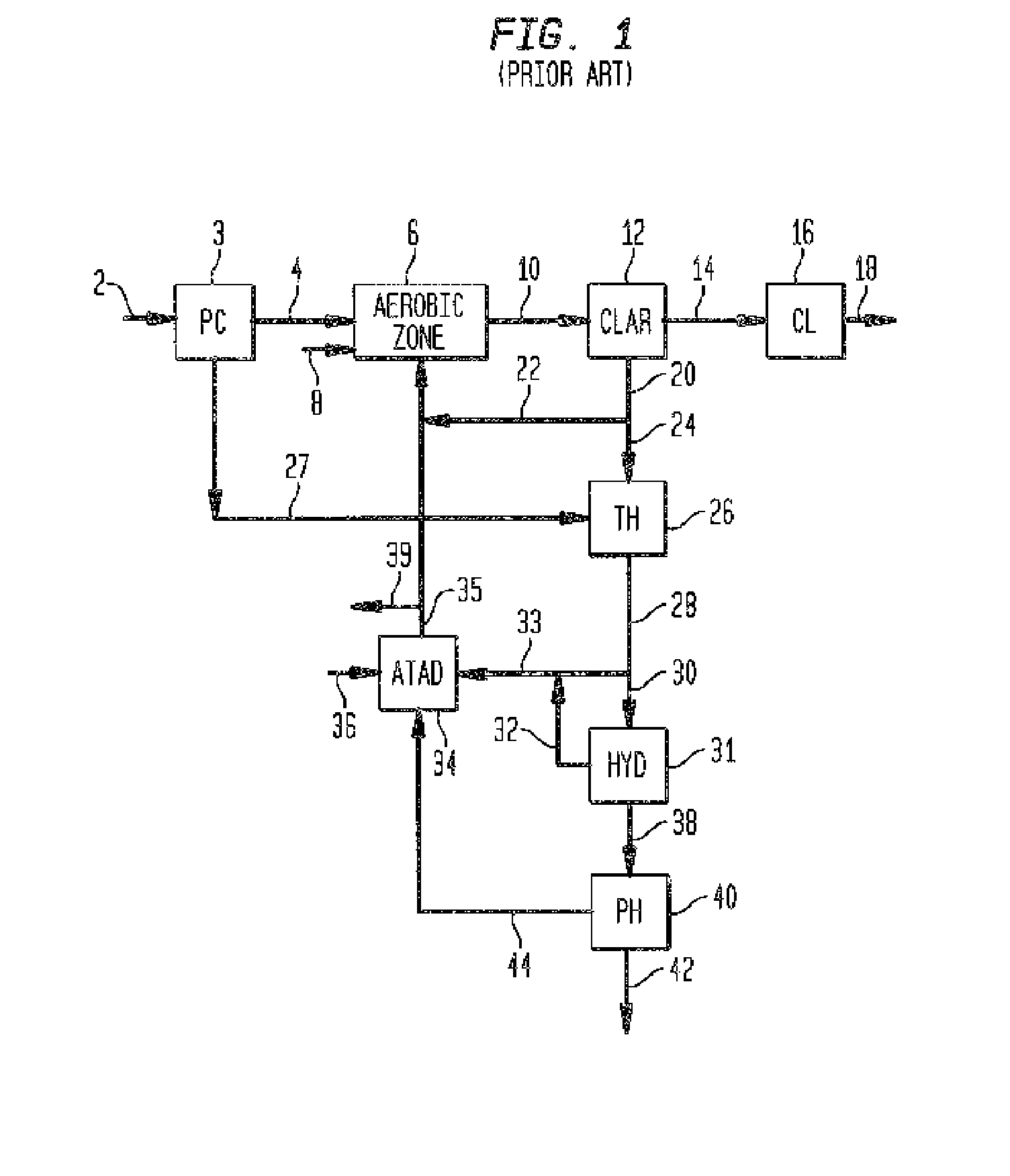Biological process for converting organic by-products or wastes into renewable energy and usable products
- Summary
- Abstract
- Description
- Claims
- Application Information
AI Technical Summary
Benefits of technology
Problems solved by technology
Method used
Image
Examples
Embodiment Construction
[0056]Referring to the Figures, in which like reference numerals refer to like portions thereof, FIG. 4 shows a generic biologically-based system, i.e., one which could employ either an anaerobic biomass, a thermophilic aerobic biomass, or a mesophilic biomass for conversion of organic wastes to energy and / or useable products. Organic wastes which are high in solids content, preferably including about 6% solids or more, are first conveyed through line 1 to a particle size reduction device 38. Organic wastes, which have a solids content of approximately 2% or less, or whose biodegradability is not significantly enhanced with a particle size reduction (PSR) step, can be conveyed directly to the bioreactor 40 through line 2. Excess biomass that is generated in the bioreactor and / or unconverted particulate organics, are also introduced to the PSR device 38 through line 4.
[0057]The proper functioning and operation of the PSR device are important elements for use in connection with the pr...
PUM
 Login to View More
Login to View More Abstract
Description
Claims
Application Information
 Login to View More
Login to View More - R&D
- Intellectual Property
- Life Sciences
- Materials
- Tech Scout
- Unparalleled Data Quality
- Higher Quality Content
- 60% Fewer Hallucinations
Browse by: Latest US Patents, China's latest patents, Technical Efficacy Thesaurus, Application Domain, Technology Topic, Popular Technical Reports.
© 2025 PatSnap. All rights reserved.Legal|Privacy policy|Modern Slavery Act Transparency Statement|Sitemap|About US| Contact US: help@patsnap.com



